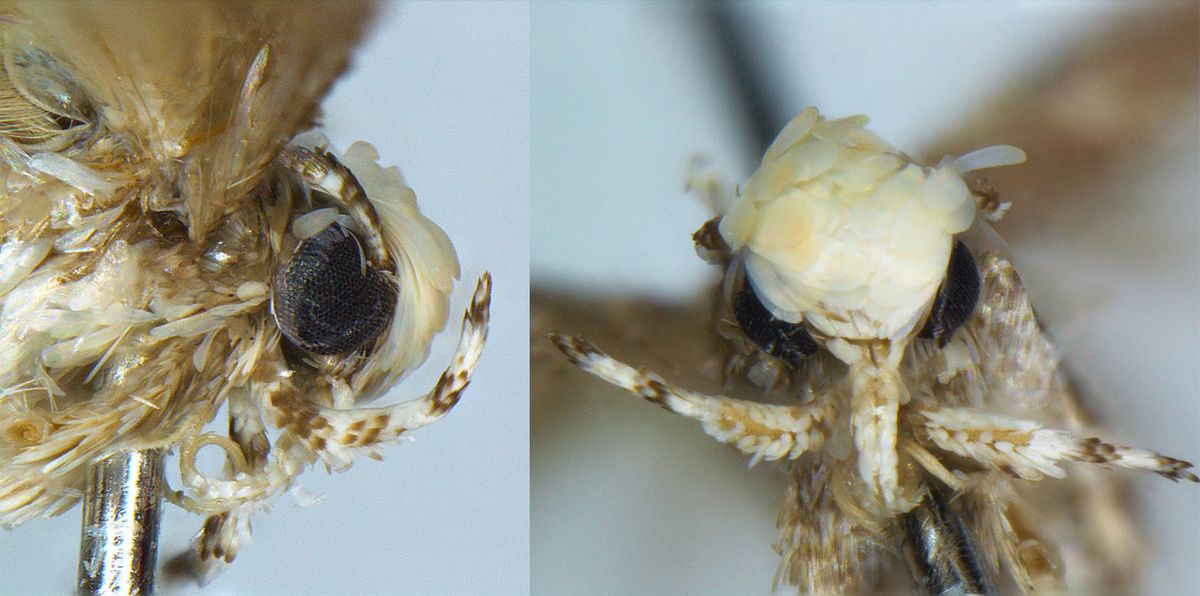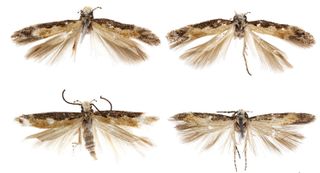Small Honor: Tiny Moth Named for Trump

A miniscule moth with a wingspan of just 0.4 inches (9 millimeters) is the first species to be named for the soon-to-be president of the United States, Donald Trump.
Yellow and white scales topping the moth's head resemble Trump's signature hairstyle, inspiring the name Neopalpa donaldtrumpi, wrote evolutionary biologist Vazrick Nazari, a researcher from Ottawa, Canada, in a new study.
The moth's habitat extends from Southern California in the U.S. through Baja California in Mexico. The wall that the president-elect has proposed building along the border between the two countries could divide that stretch. [Starstruck: Photos of Species Named After Celebrities]
Nazari discovered the new species while examining moth specimens from the Bohart Museum of Entomology in California during an investigation of the North American moth family Gelechiidae, also known as twirler moths.
"Its distinctive wing pattern and its unique DNA bar code immediately flagged it as a new and undescribed species," Nazari told Live Science in an email.
The shapes of certain folds and pouch-like structures on N. donaldtrumpi's genitalia were also unique to the species, Nazari wrote in the study.
Twirler moths earned their common name from a habit of twirling in circles when disturbed. This is the second twirler moth species to be described in the Neopalpa genus, though the family includes more than 4,830 described species, and there may be as many as 10,000 species in that family worldwide, according to the "Encyclopedia of Entomology" (Springer Netherlands, 2008).
Sign up for the Live Science daily newsletter now
Get the world’s most fascinating discoveries delivered straight to your inbox.
Hair today, gone tomorrow
Nazari examined seven N. donaldtrumpi specimens: six males and one female. Average body length was approximately the same as their wingspans, about 0.4 inches (9 mm), he told Live Science.

The moth's head scales are yellowish-white and "often rough," with additional orange-yellow coloration that Nazari described as "distinctive." Their miniscule bodies are off-white, and their wings are brown or grayish-brown, Nazari wrote in the study.
While this is the first species to bear the president-elect's name, Trump's hairstyle also inspired the informal moniker "Trumpapillar" in September 2016, for the extremely hairy orange-yellow caterpillars of the flannel moth, native to the Peruvian Amazon.
Lending a recognizable name to a new species can help inspire public interest — not only for the newly discovered animal, but also for the ecosystem it inhabits and the threats it might face, Nazari said. Scientists have named new species after "Star Wars" characters, musical icons like Johnny Cash and Beyoncé, and actor Johnny Depp, to name just a few.
President Barack Obama has inspired more species names than any other president — nine in total, including a coral reef fish native to Hawaii, a trapdoor spider and a type of lichen.
Though small, the yellow-headed moth N. donaldtrumpi could have a big impact on biodiversity awareness — for the general public and perhaps for the president-elect himself, Nazari said.
"I hope that the president will make conservation of such fragile ecosystems in the U.S. his top priority," he told Live Science. "These ecosystems still contain many undiscovered and undescribed species, and deserve to be protected for future generations."
The findings were published online today (Jan. 17) in the journal ZooKeys.
Original article on Live Science.

Mindy Weisberger is an editor at Scholastic and a former Live Science channel editor and senior writer. She has reported on general science, covering climate change, paleontology, biology and space. Mindy studied film at Columbia University; prior to Live Science she produced, wrote and directed media for the American Museum of Natural History in New York City. Her videos about dinosaurs, astrophysics, biodiversity and evolution appear in museums and science centers worldwide, earning awards such as the CINE Golden Eagle and the Communicator Award of Excellence. Her writing has also appeared in Scientific American, The Washington Post and How It Works Magazine. Her book "Rise of the Zombie Bugs: The Surprising Science of Parasitic Mind Control" will be published in spring 2025 by Johns Hopkins University Press.









